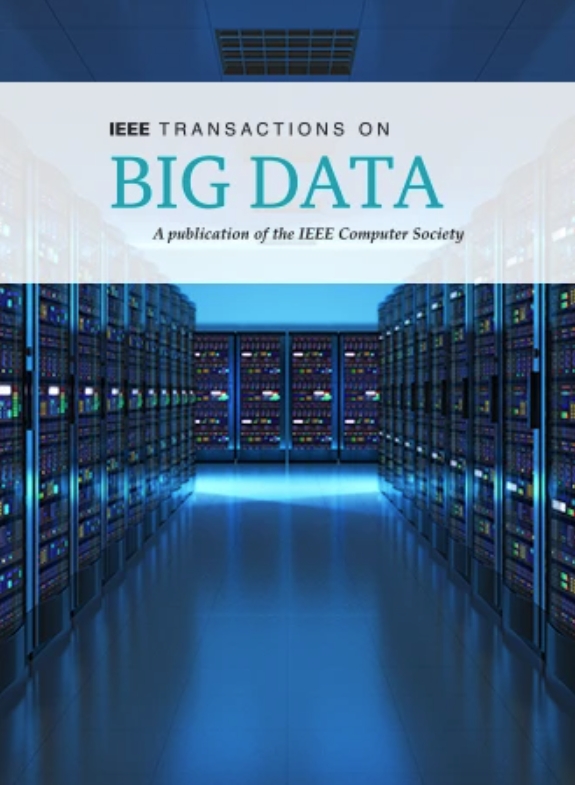COVID-19 Chest CT Image Segmentation Network by Multi-Scale Fusion and Enhancement Operations
IF 7.5
3区 计算机科学
Q1 COMPUTER SCIENCE, INFORMATION SYSTEMS
引用次数: 56
Abstract
A novel coronavirus disease 2019 (COVID-19) was detected and has spread rapidly across various countries around the world since the end of the year 2019. Computed Tomography (CT) images have been used as a crucial alternative to the time-consuming RT-PCR test. However, pure manual segmentation of CT images faces a serious challenge with the increase of suspected cases, resulting in urgent requirements for accurate and automatic segmentation of COVID-19 infections. Unfortunately, since the imaging characteristics of the COVID-19 infection are diverse and similar to the backgrounds, existing medical image segmentation methods cannot achieve satisfactory performance. In this article, we try to establish a new deep convolutional neural network tailored for segmenting the chest CT images with COVID-19 infections. We first maintain a large and new chest CT image dataset consisting of 165,667 annotated chest CT images from 861 patients with confirmed COVID-19. Inspired by the observation that the boundary of the infected lung can be enhanced by adjusting the global intensity, in the proposed deep CNN, we introduce a feature variation block which adaptively adjusts the global properties of the features for segmenting COVID-19 infection. The proposed FV block can enhance the capability of feature representation effectively and adaptively for diverse cases. We fuse features at different scales by proposing Progressive Atrous Spatial Pyramid Pooling to handle the sophisticated infection areas with diverse appearance and shapes. The proposed method achieves state-of-the-art performance. Dice similarity coefficients are 0.987 and 0.726 for lung and COVID-19 segmentation, respectively. We conducted experiments on the data collected in China and Germany and show that the proposed deep CNN can produce impressive performance effectively. The proposed network enhances the segmentation ability of the COVID-19 infection, makes the connection with other techniques and contributes to the development of remedying COVID-19 infection.



基于多尺度融合和增强运算的新冠肺炎胸部CT图像分割网络
检测到2019年新型冠状病毒疾病(新冠肺炎),自2019年底以来,该疾病已在世界各国迅速传播。计算机断层扫描(CT)图像已被用作耗时的RT-PCR测试的关键替代方案。然而,随着疑似病例的增加,CT图像的纯手动分割面临着严峻的挑战,这就迫切需要对新冠肺炎感染进行准确和自动的分割。遗憾的是,由于新冠肺炎感染的成像特征多样且与背景相似,现有的医学图像分割方法无法达到令人满意的效果。在这篇文章中,我们试图建立一种新的深度卷积神经网络,用于分割新冠肺炎感染的胸部CT图像。我们首先维护了一个新的大型胸部CT图像数据集,该数据集由861名确诊新冠肺炎患者的165667张带注释的胸部CT图像组成。受感染肺的边界可以通过调整全局强度来增强的观察结果的启发,在所提出的深度CNN中,我们引入了一个特征变化块,该块自适应地调整特征的全局属性,以分割新冠肺炎感染。所提出的FV块可以有效地、自适应地增强不同情况下的特征表示能力。我们通过提出渐进式Atrous空间金字塔池来融合不同规模的特征,以处理具有不同外观和形状的复杂感染区域。所提出的方法实现了最先进的性能。肺和新冠肺炎分割的骰子相似系数分别为0.987和0.726。我们在中国和德国收集的数据上进行了实验,结果表明所提出的深度CNN可以有效地产生令人印象深刻的性能。所提出的网络增强了对新冠肺炎感染的分割能力,与其他技术建立了联系,并有助于新冠肺炎感染治疗的发展。
本文章由计算机程序翻译,如有差异,请以英文原文为准。
求助全文
约1分钟内获得全文
求助全文
来源期刊

IEEE Transactions on Big Data
Multiple-
CiteScore
11.80
自引率
2.80%
发文量
114
期刊介绍:
The IEEE Transactions on Big Data publishes peer-reviewed articles focusing on big data. These articles present innovative research ideas and application results across disciplines, including novel theories, algorithms, and applications. Research areas cover a wide range, such as big data analytics, visualization, curation, management, semantics, infrastructure, standards, performance analysis, intelligence extraction, scientific discovery, security, privacy, and legal issues specific to big data. The journal also prioritizes applications of big data in fields generating massive datasets.
 求助内容:
求助内容: 应助结果提醒方式:
应助结果提醒方式:


